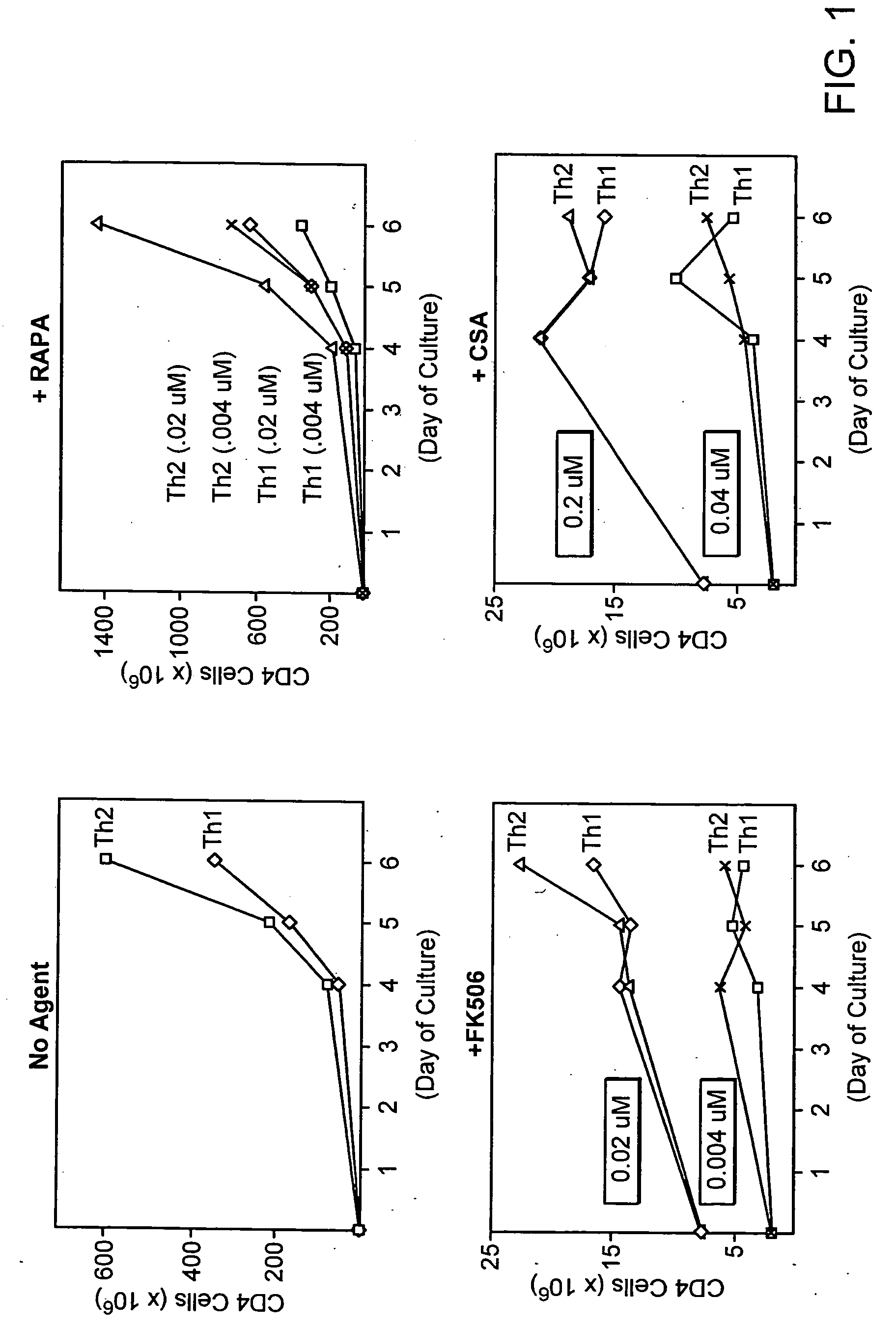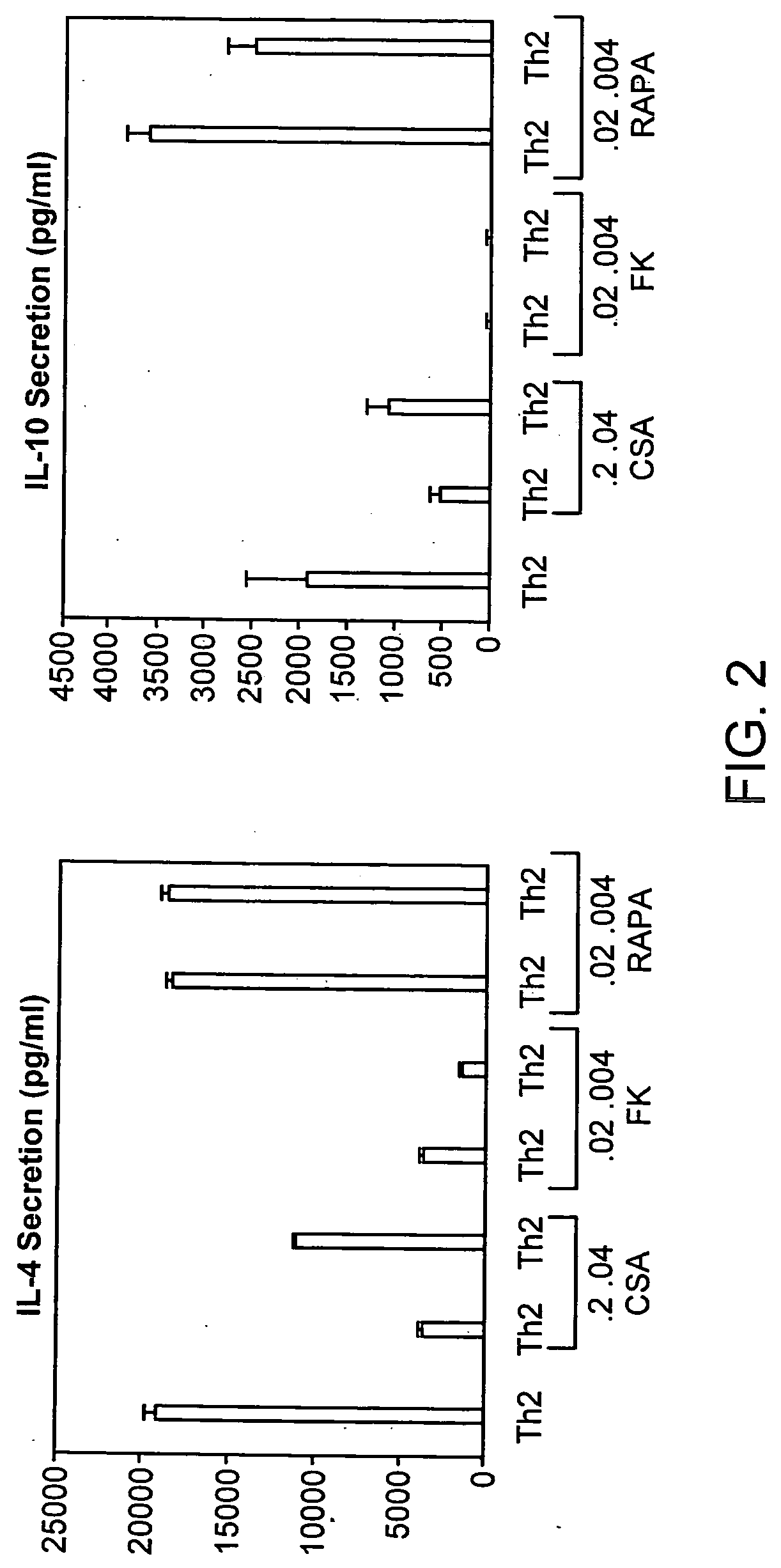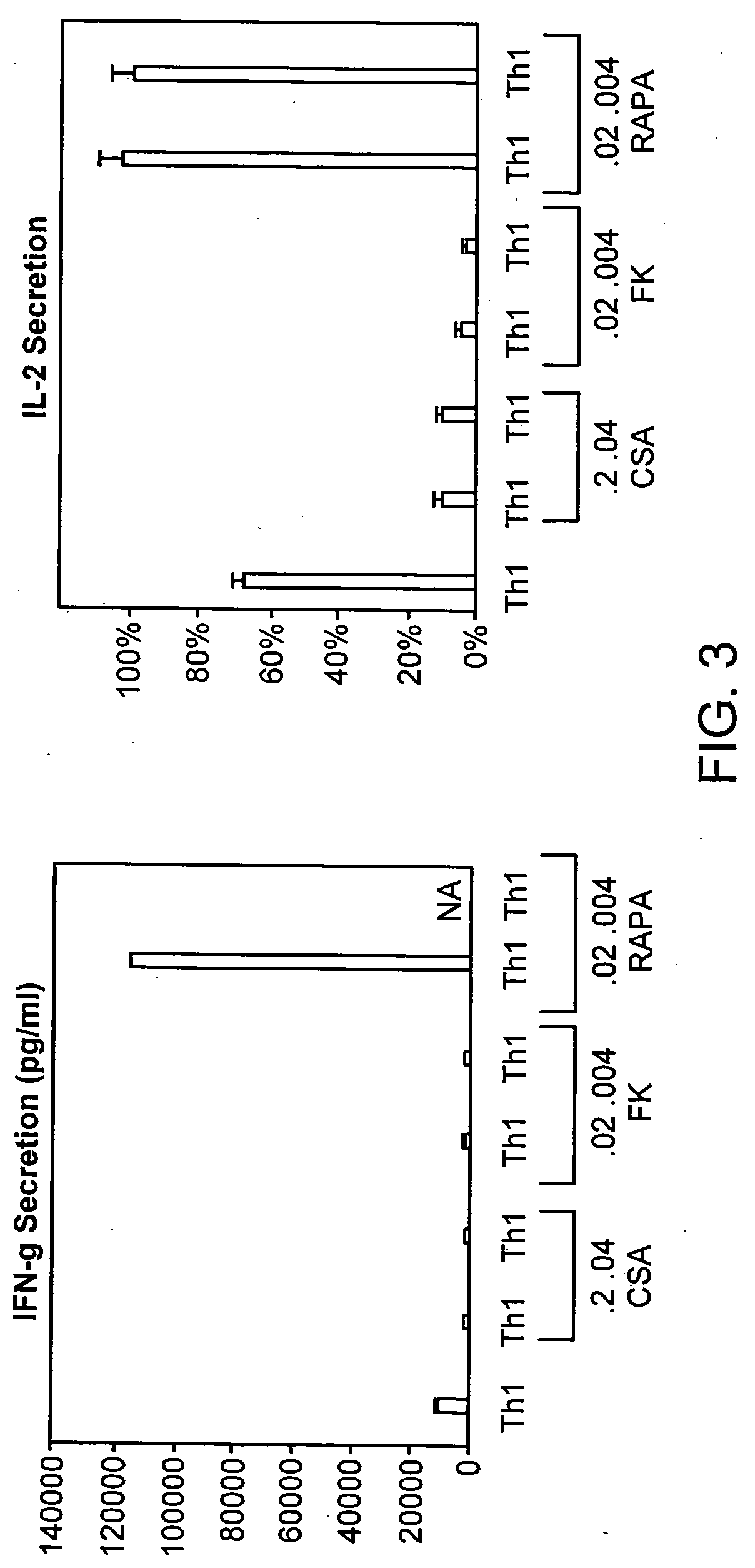Rapamycin-resistant T cells and therapeutic uses thereof
- Summary
- Abstract
- Description
- Claims
- Application Information
AI Technical Summary
Benefits of technology
Problems solved by technology
Method used
Image
Examples
example 1
CD4+ Th1 / Th2 Modulation
[0211] Use of the calcineurin inhibitors cyclosporine A or FK506 is a standard component of immune suppression after allogeneic PBSCT. Given the known role of Th1 / Th2 biology in the modulation of immunity post-SCT, it is an important goal to identify any differential influence of these two agents on the Th1 / Th2 balance. In addition to CSA and FK506, rapamycin is an immune suppression agent that has been studied in murine models, and more recently, in clinical trials of allogeneic PBSCT. Rapamycin, by binding to the mammalian target of rapamycin, controls multiple aspects of T cell metabolism, including phosphorylation of Rb protein with subsequent regulation of cyclin dependent kinases and control of protein translation via the 14-3-3 pathway. As such, the mechanism of action of rapamycin stands in stark contrast to that of CSA and FK506, which work primarily through inhibition of cytokine and other molecule mRNA transcription. To this extent, a thorough eval...
example 2
Evaluation of Immunosuppressive Agents on Th2 Responses
[0213] To evaluate for Th2-bias relative to the three immune suppression agents, CSA, FK506, and rapamycin, on day 6 after Th2 expansion, the CD4 cells were harvested from culture, washed, normalized to a concentration of 0.5×106 cells / ml, and re-stimulated with anti-CD3 and anti-CD28 for supernatant generation. On day 6 of culture, T cells were harvested, washed, normalized to a concentration of 0.5×106 cells / ml, and re-stimulated with anti-CD3 and anti-CD28 (3:1 bead to T cell ratio) for 24 hours to generate a supernatant. Culture supernatants were tested for IL-4 and IL-10 content by a two site ELISA (BioSource), with experimental samples scored relative to a standard curve generated from evaluation of recombinant murine IL-4 and IL-10. Cell culture labels along the x-axis represent cytokine and immune suppression agent conditions during the initial six days of T cell generation; there were no cytokines or immune suppression...
example 3
Evaluation of Immunosuppressive Agents on Th1 Responses
[0215] To evaluate the effect of these three agents, CSA, FK506, and rapamycin, on potential Th1-bias, the Th1 cultured cells were also re-stimulated with anti-CD3, anti-CD28, and the supernatant was tested for the type I cytokines IL-2 and IFN-γ. Murine CD4+ cells were expanded under the Th1 culture condition using anti-CD3, anti-CD28 co-stimulation. On day 6 of culture, T cells were harvested, washed, normalized to a concentration of 0.5×106 cells / ml, and re-stimulated with anti-CD3 and anti-CD28 (3:1 bead to T cell ratio) for 24 hours to generate a supernatant. Culture supernatants were tested for IL-2 and IFN-γ content by a two site ELISA (BioSource). Experimental samples scored relative to a standard curve generated from evaluation of recombinant murine IL-2 and IFN-γ. Cell culture labels along the x-axis represent cytokine and immune suppression agent conditions during the initial six days of T cell generation; there were...
PUM
| Property | Measurement | Unit |
|---|---|---|
| Molar density | aaaaa | aaaaa |
| Molar density | aaaaa | aaaaa |
| Molar density | aaaaa | aaaaa |
Abstract
Description
Claims
Application Information
 Login to View More
Login to View More - R&D
- Intellectual Property
- Life Sciences
- Materials
- Tech Scout
- Unparalleled Data Quality
- Higher Quality Content
- 60% Fewer Hallucinations
Browse by: Latest US Patents, China's latest patents, Technical Efficacy Thesaurus, Application Domain, Technology Topic, Popular Technical Reports.
© 2025 PatSnap. All rights reserved.Legal|Privacy policy|Modern Slavery Act Transparency Statement|Sitemap|About US| Contact US: help@patsnap.com



